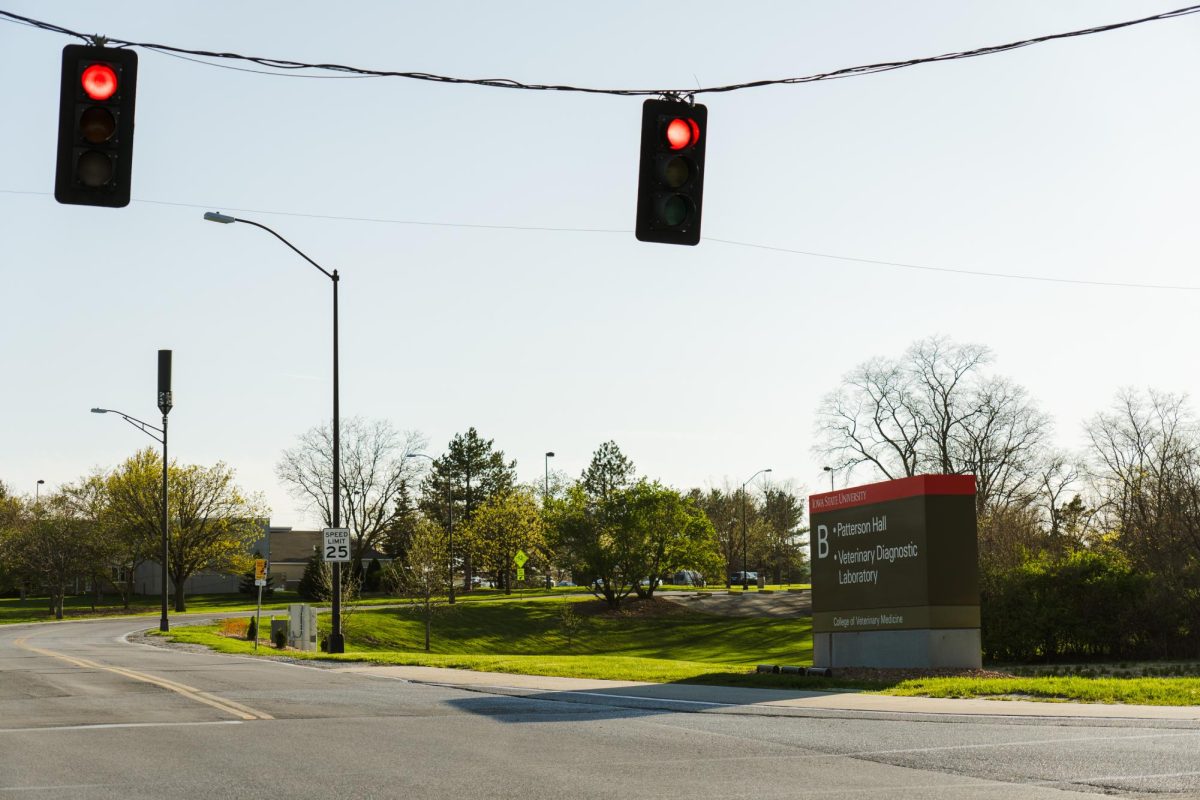Vet students gain hands-on experience at Blank Park Zoo
March 20, 2012
Students at Iowa State’s College of Veterinary Medicine are gaining hands-on experience working with June Olds at the Blank Park Zoo in Des Moines.
Olds has been a veterinarian since 2004 and is a graduate of Iowa State’s College of Veterinary Medicine.
“I ran my own small animal practice in Des Moines and on my days off, I worked at the Blank Park Zoo,” Olds said. “The zoo wanted me there more, though, and Iowa State’s College of Veterinary Medicine was trying to begin a program with the zoo, so they created a position for someone who would work both at the vet school and the zoo. Things just kind of fell into place.”
Last July, Olds took the position and is now a primary care clinician in the Lloyd Veterinary Medical Center, as well as a vet at the Blank Park Zoo. She is usually at the zoo three to four days a week and at the university one to two.
This gives her students the unique opportunity to do a rotation at the zoo and work with exotic animals.
“During the first three years of vet school, students learn by the book,” Olds said. “The fourth year, they do clinical rotations to apply all the skills they learned from the book.”
A rotation at the zoo is four weeks long, Olds said, and they rotate through different areas of the zoo, such as big cats and small mammals.
“Every day I rotate to a different group of animals at the zoo,” said Mark Madsen, the senior veterinary student currently doing the rotation. “For example, one day I’ve already done birds and aquatic mammals, and one day I’ll do small mammals and another I’ll do carnivores, and so forth.”
Other zoo employees provide help to the ISU veterinary students.
“When I’m not there, they learn from the zookeepers about animal husbandry and care, like how they’re trained and fed. When I’m there, they basically do whatever I’m doing,” Olds said.
Some of the things students might get to do when Olds is there are routine examinations, dental work or anything else that might come up.
“There’s really not a typical day,” she said. “I try to plan routine exams so the students can get experience with the different animals, but if an emergency comes up, it pushes aside the planned stuff.”
Madsen explained one such emergency.
“We had one incident where a vulture was trying to fly out of its cage,” Madsen said. “The wind was blowing, which makes them want to fly. It had a few scrapes on it, but was OK.”
Madsen chose this elective rotation, he explained, because he wanted to get exposure to exotic animals.
“I wanted to become more comfortable working with them,” he said. “For instance, they have a huge collection of birds at the Blank Park Zoo. I didn’t have a lot of experience with birds, but now I’m learning all kinds of things about them and how to handle them, which will translate to clinical practice.”
Though Madsen is learning a lot from working with birds, there is another section of the zoo he is excited to get to learn about.
“I really like the big cats. They have a lot of challenges in health care, though,” Madsen said. “They get really stressed out when lots of people walk by their enclosures, and excessively lick themselves and sometimes chew on their tails.”
There are many other challenges being a zoo vet as well. Olds explains some of this during her lectures and while working with the rotational students.
“We talk about the field of zoo medicine,” she said. “There aren’t a lot of jobs in zoos, and so the field is really competitive. Zoo veterinarians also make less money than those at a private practice.”
Madsen said there are some challenges to the work.
“My biggest challenge is that I had three years of classroom learning based on domestic animals and not a lot about exotics,” he said. “There’s not a lot out there about what kind of drugs to give a lion with an infection or how much or for how long. The zoo community is very good about helping each other out if they have knowledge about some situation that another zoo is having.”
Olds said the education is a one-of-a-kind experience.
“It’s a constant learning curve,” Olds said. “The student can’t just focus on one thing, they have to be interested in many things all at once.”
















